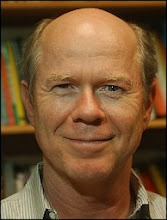Heroin and amphetamine addiction
Periodically, I am asked whether neurofeedback can help heroin or amphetamine addiction. The answer is yes and no. While I have had excellent success with marijuana, alcohol, and cocaine dependency, heroin and amphetamine are far more difficult to treat. I have found that the best initial treatment is Ibogaine for these two drug dependencies. Ibogaine is a plant alkaloid found in the root bark of a West African shrub. It has the unique property of removing withdrawal symptoms and reducing cravings from heroin and amphetamines. It has a long history of traditional use as a medicinal and spiritual tool in West Africa. For the last 40 years, it has increasingly been used in western society as a tool in addiction therapy and psychotherapy. Ibogaine is legal in most parts of the world, but is illegal in the US. One has to go to Mexico for this treatment. My role can be to offer follow-up neurofeedback to further stabilize the brain and minimize relapse. For further information, you can go to websites:
http://www.ibogaine.co.uk/ibogaine6.htm
http://www.awakeninginthedream.com/
http://www.lunartproductions.com/

